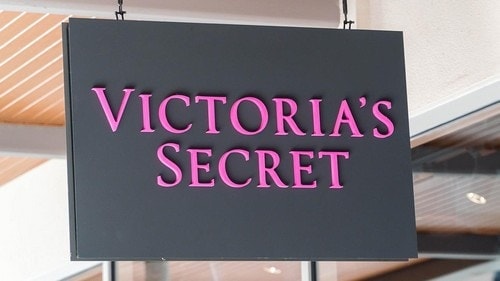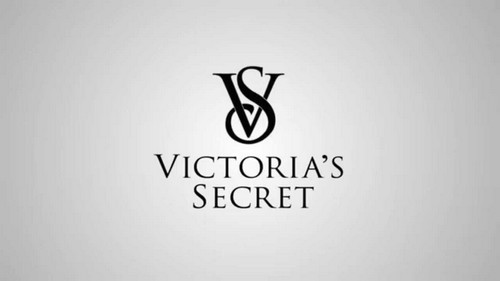The Marketing mix of Victoria’s Secret analyses the 4Ps of Victoria’s Secret, including the Product, Price, Place, and Promotions. Victoria’s Secret is an American origin company founded in 1977 by its founder Roy Raymond. It is associated with the lifestyle and retail fashion industry, which includes apparel and accessories. The company is a subsidiary of its parent company, L Brands. Victoria’s Secret occupies the top position in America as a women’s lingerie retailer. It faces competition from the following.
- Fredrick’s
- Sara Lee
- True & Co
- Adore Me
- Fruit of the Loom – Vanity Fair
- Enamor
- Triumph
About Victoria’s Secret
- Type: Lingerie retailer
- Industry: Retail
- Founded: 1977
- Founder: Roy Raymond
- Headquarters: Columbus, Ohio, United States
- Area served: Worldwide
- Key people: Leslie H. Wexner (Chairman) and Martin Waters (CEO)
- Number of employees: 118,000
Table of Contents
Victoria’s Secret Product Strategy
Victoria’s Secret handles the marketing strategy, manufacturing, and designing of its beauty products, women’s wear, and lingerie. The brand is one of the niche players in the consumer market and specializes in updating and improving its innovative products.
Victoria’s Secret offers a wide range of products.
The new Product Mix of Victoria’s Secret in 2023 is as follows (Source).
- Lingerie: This is the core product line of Victoria’s Secret. It includes a variety of bras, panties, lingerie sets, sleepwear, and loungewear. The lingerie range covers various styles, such as push-up bras, sports bras, bralettes, and more, catering to multiple sizes and preferences.
- Beauty Products: Victoria’s Secret also has a significant presence in the beauty market. Their beauty product line includes fragrances, body mists, lotions, and body washes. The brand is well-known for its signature scents and seasonal fragrance collections.
- Swimwear: Although Victoria’s Secret had paused its swimwear line for a few years, it has since reintroduced it. The swimwear collection includes bikinis, one-pieces, and cover-ups in various styles and sizes.
- Sportswear: The brand offers a range of sportswear, which includes sports bras, leggings, and workout apparel. This line is designed to be functional for exercise and stylish for everyday wear.
- Accessories: Victoria’s Secret also offers a range of accessories like bags, cosmetic cases, sunglasses, scarves, and other fashion accessories. These products often complement their core lingerie and beauty lines.
- Victoria’s Secret PINK: This sub-brand targets younger women and teenagers. PINK offers a more casual range of loungewear, sportswear, bras, and panties, often with more playful and vibrant designs than the main line.
The product mix can vary seasonally, including special collections, limited edition products, and collaborations with other designers or celebrities. Victoria’s Secret is known for its emphasis on branding and its marketing strategies, including its high-profile fashion shows and celebrity endorsements.
Victoria’s Secret Place Strategy
Victoria’s Secret was founded in San Francisco, California, and built its first store at Stanford Shopping Center in California. Currently, the company operates via eighteen independently owned stores and one thousand and seventeen stores owned by the company.
These are located at prime locations in Singapore, Australia, Taiwan, Iran, Israel, Jordan, Egypt, South Korea, Malaysia, China, Japan, Brazil, Argentina, Mexico, Sweden, Denmark, Serbia, Germany, France, Italy, United Kingdom, United States and Hungary. Victoria’s Secret has its headquarters based in Columbus, Ohio.
Victoria’s Secret has divided its business operations into three groups: Victoria’s Secret Stores, Victoria’s Secret Beauty, and Victoria’s Secret Direct. It operates via retail formats like apparel stores and general merchandise outlets.
Victoria’s Secret Stores projected an image of soft, classic and romantic. The area of most of its stores is estimated at six thousand square feet, and they are located primarily in shopping centers. Victoria’s Secret Stores catalog sales are estimated at four hundred million catalogs yearly. Victoria’s Secret also started its expansion plans from stores in Canada to other countries.
It also opened Victoria’s Secret Travel and Tourism outlets in airports and shopping centers. In 2010, the company decided on its expansion plans with the help of a franchise system. Victoria’s Secret Direct deals in the catalog and online operations. The company accepted orders for its catalog 24*7 every day. In 1998, Victoria’s Secret opened its website for e-commerce. Victoria’s Secret Beauty deals with beauty and bath products.
Here’s the place strategy of Victoria’s Secret.
- Global Store Network: Victoria’s Secret operates a vast global network of retail stores, including flagship stores in major cities worldwide. These stores are often located in high-traffic shopping areas and malls, making the brand highly accessible to a broad customer base.
- Online Sales Platform: The brand has a solid online presence and an e-commerce platform allowing customers to purchase products from anywhere. This digital strategy complements their physical stores and caters to the growing trend of online shopping.
- Selective Store Closures: Victoria’s Secret has strategically closed underperforming stores in recent years, focusing on maintaining stores that perform well and shifting more resources toward online sales. This is part of a broader strategy to optimize their retail footprint.
- Franchise Operations: Victoria’s Secret often operates through franchises in international markets, partnering with local businesses to expand its global reach. This approach allows them to adapt to local market conditions and preferences.
- Experiential Retailing: The brand’s stores are known for their luxurious and sensory-rich shopping experience. They focus on creating an inviting atmosphere through store design, layout, and customer service, enhancing the overall appeal of their physical stores.
Victoria’s Secret Pricing Strategy
Victoria’s Secret is one of the most successful business companies, earning a gross income of 500,000 in its first financial year. By 1982, the company’s annual sales figures were a whopping seven million dollars, of which 55% was earned via its catalog sales.
Victoria’s Secret is a premium innerwear that has targeted women from high society and urban areas, looking for luxurious and opulent items as its target audience and potential customers. The brand has positioned itself as a company intent on making a bold fashion statement via its sexy and feminine products.
Women have an affinity for high-quality goods and are willing to shed extra for products they believe in. Victoria’s Secret has a product line that is considered a status enhancer, and most importantly, it makes women feel beautiful and sensual. The company has adopted a premium pricing policy for all its products as it is assured of the brand loyalty of its customers. The high prices have helped the brand in garnering greater profits.
Victoria’s Secret employs a multifaceted pricing strategy that aligns with its brand positioning and market dynamics. Here’s a breakdown of their approach:
- Premium Pricing: As a leader in the lingerie market, Victoria’s Secret adopts a premium pricing strategy. This reflects the high quality of their products, their brand prestige, and their unique designs. Setting prices higher than some competitors creates a perception of exclusivity and luxury.
- Psychological Pricing: The brand often uses psychological pricing tactics, such as pricing items just below a round number (e.g., $49.99 instead of $50). This approach is intended to make prices appear more attractive to consumers, encouraging purchase decisions.
- Promotional Sales and Discounts: Victoria’s Secret frequently employs promotional strategies to attract a broader range of customers and boost sales volume. These include semi-annual sales, limited-time offers, and discounts on specific product categories. Such promotions help maintain customer interest and clear inventory.
- Dynamic Pricing Strategy: Victoria’s Secret adjusts its prices in response to various factors such as seasonality, product demand, and inventory levels. For instance, pricing may vary for seasonal collections or during peak shopping periods like holidays.
- Value-Based Pricing for Exclusive Collections: Victoria’s Secret often uses value-based pricing for limited edition collections or collaborations with celebrities and designers. This strategy sets prices based on the perceived value to the customer rather than solely on production costs, capitalizing on the exclusivity and uniqueness of these collections.
- Tiered Pricing for Product Differentiation: The brand employs tiered pricing within its product range, with different lines (like Victoria’s Secret PINK or their luxury collections) positioned at varying price points. This approach caters to a diverse customer base with different spending capacities and preferences.
Overall, Victoria’s Secret’s pricing email marketing strategy is a balanced mix of premium positioning and market competitiveness, designed to maintain its luxury image while appealing to a broad consumer base.
Victoria’s Secret Promotion Strategy
Victoria’s Secret started its marketing campaigns out with an emphasis on value-driven products but, with time, has evolved to create an aura of a luxurious shopping experience that is incomparable. It organizes fashion shows annually to serve as an elaborate tool for marketing the products. In the early 1990s, Victoria’s Secret decided to use supermodels in its fashion shows and ad campaigns.
In 1995, their fashion shows aired on American television at prime time. In 1999, Stephanie Seymour, Heidi Klum, and Tyra Banks were roped in to feature in its fashion show. In the same year, the brand displayed a 30-second advertisement during the Super Bowl, resulting in a million visits to its official website within an hour. In 2004, Bob Dylan was roped in for a commercial.
The brand has been advertising via fashion magazines and fashion shows, and in 2009, it decided to venture into social networking. It has its official page on Facebook, Pinterest, and Twitter account besides its official site to have brand ambassadors and display fashion shows, commercial shoots, and catalog content.
Victoria’s Secret roped in famous models like Daniela Pestova, Karen Mulder, Helena Christensen, and Tom Jones for its Angels lingerie line. Important spokesmodels for the lingerie brand also include Taylor Momsen, Bregje Heinen, Ana Beatriz Barros, Jessica Stam, Eva Herzigova, and Claudia Schiffer.
Some Recent Video ads and Print ads for Victoria’s Secret are:
Liked this post? Check out the complete series on Marketing Mix

